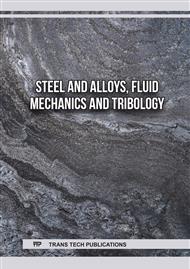p.79
p.87
p.99
p.107
p.117
p.125
p.135
p.165
p.179
Experimental and Numerical Analysis of Hail Impact on Sheet Molding Compounds
Abstract:
Hail impact is a critical loading situation for unidirectional fiber reinforced composites in automotive and aerospace applications. Therefore, it was already analyzed frequently in literature, focusing on thin-walled structural components and panels. Discontinuous fiber reinforced materials, such as sheet molding compounds (SMCs), and their behavior under local, high velocity impact of hail, was not considered in detail so far. The current study is aimed to investigate the fracture behavior of 2 mm and 4 mm thick SMCs sheets under a high velocity ice ball impact (80 m/s) from a numerical and experimental point of view. The strain-rate dependent material modeling of ice balls is based on an elasto-plastic material model and utilizes smooth particle hydrodynamic (SPH) modeling. Each unidirectional fiber bundle of the SMC plate was modeled individually and the space between these discrete patches was filled by elements representing the matrix material. A micromechanical analysis using representative volume elements (RVEs) was conducted to determine the homogenised strain rate dependent response of the SMC fiber bundle. In addition, a 3D Maximum Stress and Hashin damage model was calibrated to simulate the fracture of the SMC sheets. The accuracy of the applied models was evaluated by comparing the numerical model to results gathered from experimental hail impact trials. Hereby, a high-speed camera system was used to record the experiment and to gain insight into the fracture behavior of the composite structures. In general, it was observed that a 2 mm thick SMC plate was not able to withstand the impact of an ice ball whereas the 4 mm thick sheet was not visually affected. Computer tomography measurements of the impacted region revealed significant damage within the 4 mm thick SMC plate.
Info:
Periodical:
Pages:
125-134
Citation:
Online since:
June 2025
Price:
Сopyright:
© 2025 Trans Tech Publications Ltd. All Rights Reserved
Share:
Citation:



